Lithuania / Lietuvos Respublika – Let’s explore here
What’s it like in Lithuania?
Lithuania is a small, low lying country in the Baltic region in the east of Europe. Its highest point is Aukštojas Hill, at only 964 ft (294m) high. Over a third of the country is forested and there are lots of lakes and wetlands.
The population of Lithuania is approaching three million people (2024), with about ¼ living in the capital, Vilnius. Around 1½ million tourists visited in 2023.
Its neighbours are Latvia, Belarus, Russia and Poland, several of which it shares its long and illustrious history with.
Did you know that in the 14th century, the Grand Duchy of Lithuania was the largest country in Europe! At the time, it comprised all of the country that exists currently, plus Belarus, most of Ukraine, and parts of Latvia, Moldova, Poland and Russia. They celebrate this fact a lot in Lithuania with many statues and buildings.
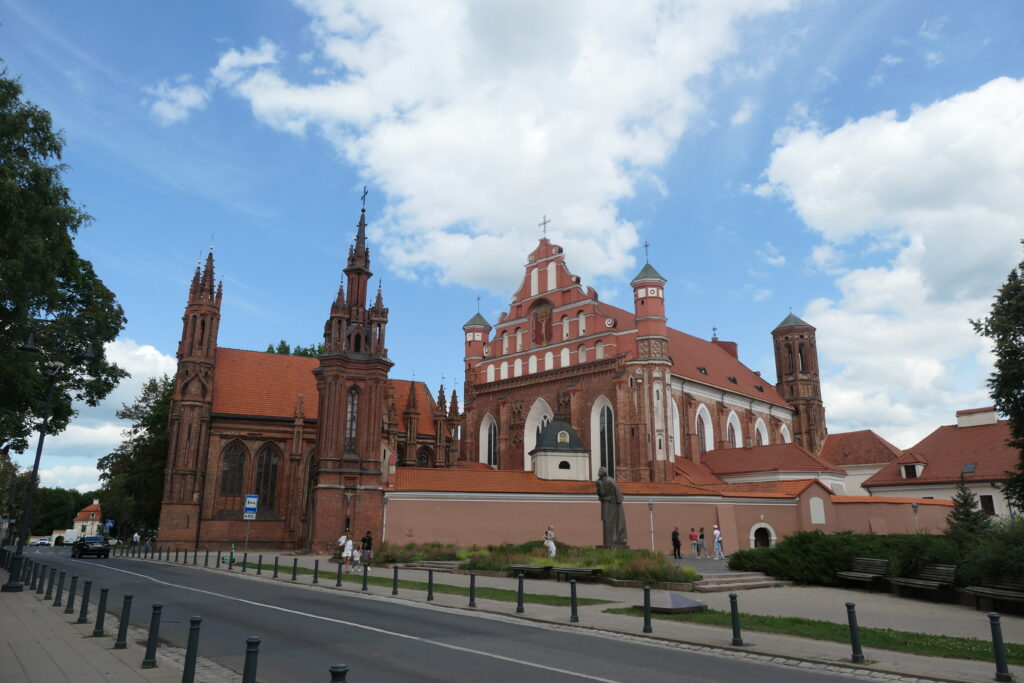
A little bit about the history of Lithuania
Early History and Formation of the Grand Duchy of Lithuania
Lithuania’s history dates back to the early medieval period, with the first known settlements in the region from around 2000 BC. The Lithuanian people, part of the Baltic ethnic group, formed tribal societies that were often in conflict with neighboring Slavic, Germanic, and Scandinavian groups. In the 13th century, the Grand Duchy of Lithuania was founded by Mindaugas, who became the first and only king of Lithuania in 1253. The Grand Duchy expanded significantly, eventually becoming one of the largest countries in Europe, stretching from the Baltic Sea in the west to the Black Sea in the south.
Union with Poland and the Polish-Lithuanian Commonwealth
In 1386, the Grand Duchy entered into a personal union with the Kingdom of Poland when Grand Duke Jogaila became King Władysław II Jagiełło of Poland. This union laid the foundation for the Polish-Lithuanian Commonwealth, a powerful entity that lasted until the late 18th century. During this period, Lithuania played a key role in European politics, with the Commonwealth becoming a major force in Eastern Europe, particularly during the 16th and 17th centuries. However, internal strife, external invasions, and conflicts with Russia weakened the Commonwealth.
Partitions and Russian Control
In the late 18th century, the Polish-Lithuanian Commonwealth was partitioned by its neighbors — Russia, Prussia and Austria — in a series of partitions from 1772 to 1795. As a result, Lithuania was absorbed into the Russian Empire. During this time, Lithuania experienced significant political and cultural suppression, including the banning of the Lithuanian language in publications and schools. The region also saw uprisings, such as the November Uprising of 1830 and the January Uprising of 1863, in an effort to regain independence, but these were unsuccessful.
First Independence and Interwar Period
Lithuania declared its independence from Russia on February 16, 1918, following the collapse of the Russian Empire during World War I. The country formed a democratic republic and made significant strides in developing its national institutions. However, Lithuania’s independence was short lived, as it faced pressure from neighbouring countries. In 1940, Lithuania was occupied by the Soviet Union as part of the Molotov-Ribbentrop Pact between the Soviet Union and Nazi Germany. This marked the beginning of a period of Soviet occupation and repression.
Soviet Occupation and World War II
During World War II, Lithuania was invaded by Nazi Germany in 1941, but by 1944, the Soviets reasserted control. The Soviet regime implemented strict policies, including forced collectivisation, deportations, and widespread purges. Despite efforts to suppress Lithuanian identity, resistance movements, such as the Forest Brothers, continued to fight for independence. Lithuania remained under Soviet control until the late 1980s.
Restoration of Independence
In the late 1980s, as the Soviet Union weakened, Lithuania began to push for greater autonomy. On March 11, 1990, Lithuania declared its independence from the Soviet Union, becoming the first republic to do so. This move sparked a tense standoff with the Soviet Union, but Lithuania’s independence was eventually recognised. In 1991, after the collapse of the Soviet Union, Lithuania became a fully independent state.
Modern Lithuania
Since regaining independence, Lithuania has made significant progress in political, economic, and social development. It became a member of the European Union and NATO in 2004, and it has modernized its economy, becoming one of the fastest-growing economies in Europe. Lithuania continues to focus on strengthening its democratic institutions and maintaining strong relations with the West, while also addressing historical issues related to its Soviet past. Today, Lithuania is a member of several international organisations and is recognised for its cultural heritage, economic growth, and political stability.


Lithuania road trip
We’ve created a blog for our road trip through Lithuania. You may find it helpful, and you may pick up some tips, or more likely mistakes not to make that we’ve made 😉 Our Lithuanian road trip was part of a much larger European road trip.
The coast
On our Lithuanian road trip we travelled from Vainode in Latvia towards Palanga and Klaipėda on the coast of Lithuania. Lithuania does not have a huge coast, and we were keen to see how it had been developed. Additionally we really wanted to see the Russian exclave, Kaliningrad Oblast.
The centre
Driving eastwards, we headed towards Kaunas, which we knew nothing about. Kaunas was so lovely that we stopped over for several nights, using it as a base. From there we visited numerous small towns in the countryside, as well as the city of Kėdainiai.
The capital
We also took a day trip to the capital, Vilnius, which was definitely worth it. The old town and the new are both really lovely, and it’s such a relaxing place to be. The architecture was lovely, and if we had the time again, we’d stay for longer in Vilnius to explore it in more depth.
From Kaunas we headed south on to super friendly Poland.
Map of our road trip through Lithuania

This is a map of our road trip through Lithuania.
Our route took us from Skuodas – Palanga – Klaipėda – Kaunas – Kėdainiai – Vilnius – Kaunas – Juozapavas
We’ve learned a lot about the Baltic states on this journey, and how they’re so different from each other. We’ve met loads of different people in Lithuania, almost without exception they’ve been super friendly and welcoming.
Our favourite places in Lithuania
These are some of the best places that we explored on our road trip through Lithuania. We’ve put them in alphabetical order.
Darbėnai

Darbėnai is a small town in western Lithuania, located in the Klaipėda County, near the Baltic Sea coast. Historically, Darbėnai was an important settlement in the region, known for its agricultural significance. The town has a population of approximately 1,200 residents (2021), and is home to the Darbėnai Castle mound, an archaeological site linked to early medieval settlements.
The surrounding landscape features typical Lithuanian countryside, i.e. pretty flat with intermittent forests and fields. Everywhere you look there are lots and lots of wind turbines, that form a large wind farm that powers most of western Lithuania. Unfortunately when we were there it was grey and drizzly.
Darkuškiai
Darkuškiai is a small village in south west Lithuania, located about 12 miles (20 km) south of the town of Šilalė. The village has a small population, typically under a few hundred residents, reflecting its rural nature. It’s surrounded by a landscape of forests and farmland, and is a quiet place for a quick break.

Kaunas
Kaunas is great!
We loved Kaunas so much, we stopped over for several days and used it as our base to explore the rest of Lithuania. It’s such a friendly and beautiful place, and there are lots and lots of statues, murals and street art. It’s a university town which was celebrating women in tech whilst we were there 🙂
It used to be the capital of the country between the World Wars, and is now the second biggest city after the capital, Vilnius. It’s located just south of the centre of Lithuania and is a UNESCO World Heritage Site. It was also a European Capital of Culture in 2022.
The beautiful main street with all the shops and restaurants on is called Laisvės Alėja, or Liberty Avenue; it’s the longest pedestrian street in Eastern Europe! It’s tree lined down it’s centre, providing welcome shade during the heat of the summer, and is pedestrianised.
Kaunas castle
Kaunas castle is one of the oldest and most important architectural monuments in the country. The original castle was built in the 14th century by the Grand Duchy of Lithuania to defend against the Teutonic Knights. The structure was a typical medieval fortress, featuring stone walls, defensive towers and a moat. Over time, the castle suffered damage from invasions and natural decay, especially in the 17th century. Today, parts of the castle have been restored, and it now serves as a museum and cultural venue.
























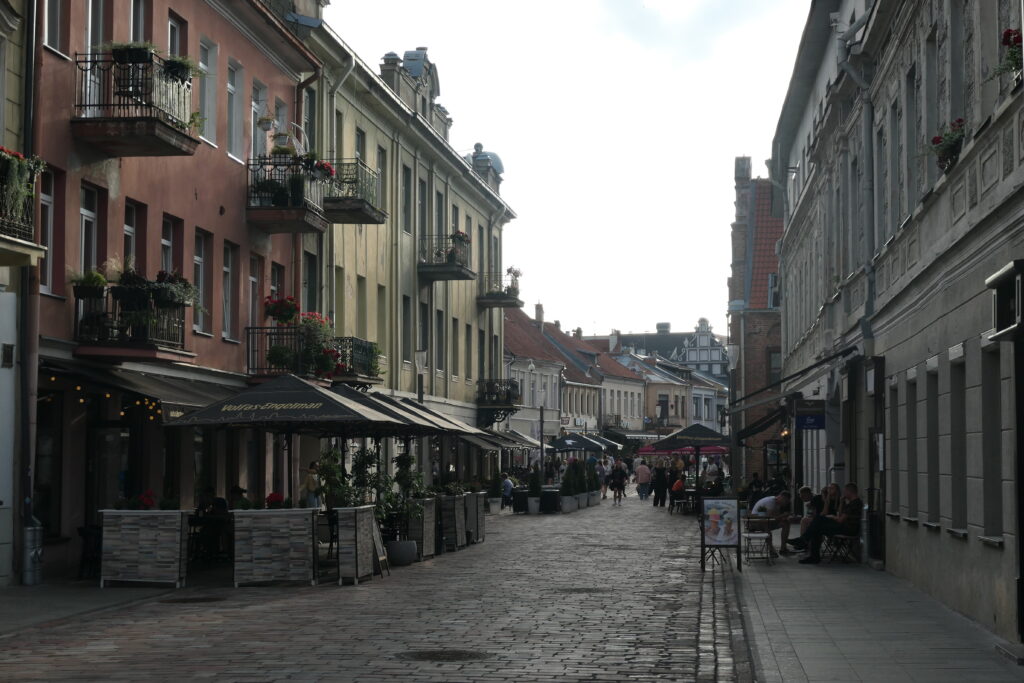


Kėdainiai
Kėdainiai is an old town based just north of Kaunas, in the centre of the country. It’s an old 17th century town, located along the Nevėžis River, which became a key center for trade and commerce in the region during the Grand Duchy of Lithuania. They’ve preserved the essence of the old town really well, which showcases a mix of Gothic, Renaissance, and Baroque architectural styles
Kėdainiai is famous for its historical landmarks, including the Church of St. George, the Kėdainiai Synagogue, and the old wooden houses. The statue in the Great Market Square is one of many that celebrates the long war with the Teutonic Order from Germany in the 15th to 17th centuries.
In the 16th century, Kėdainiai began to grow significantly, especially under the rule of the powerful Radvila family, who were influential magnates in Lithuania. The Radvilas played a pivotal role in the town’s development, promoting economic growth, urban planning, and religious tolerance. They brought Lutheranism to the region and allowed different faiths to coexist, with both Protestant and Catholic churches existing side by side, along with a significant Jewish community.
By the 17th century, Kėdainiai had become an important administrative and trading center. The town’s layout, with its market square and well-organized street grid, reflects its status as a thriving hub of commerce. It was also a vital town during the Swedish-Lithuanian Wars, facing both destruction and resilience during conflicts.
The 18th and 19th centuries saw changes as the town experienced the decline of feudal powers and the shifting political landscape of the Russian Empire. In the 20th century, Kėdainiai underwent significant modernization, and today, it remains a town of historical significance.
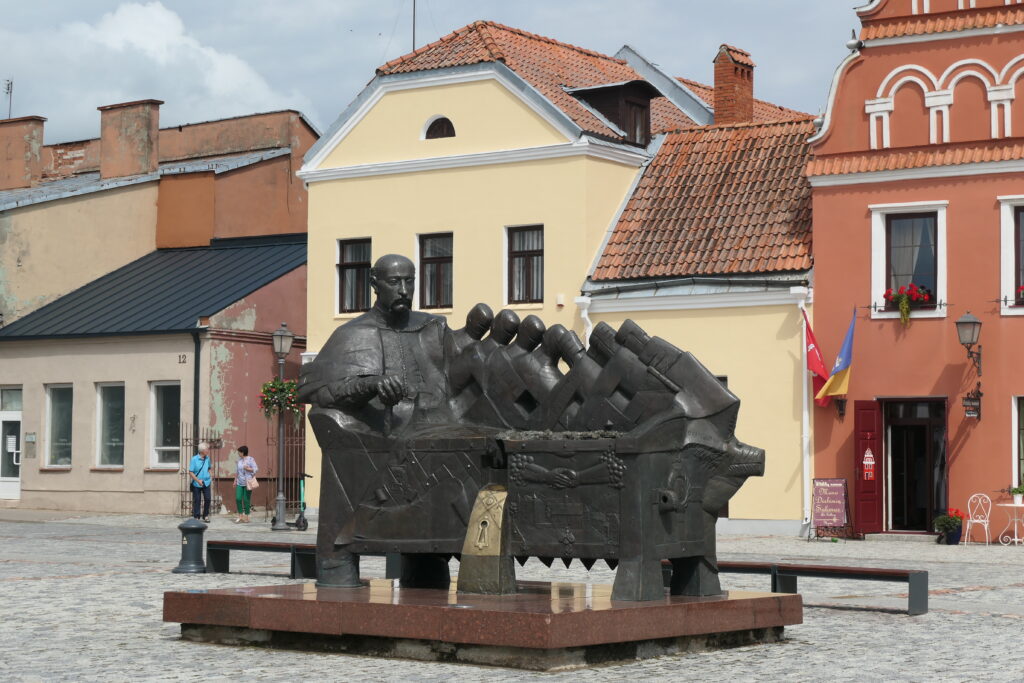
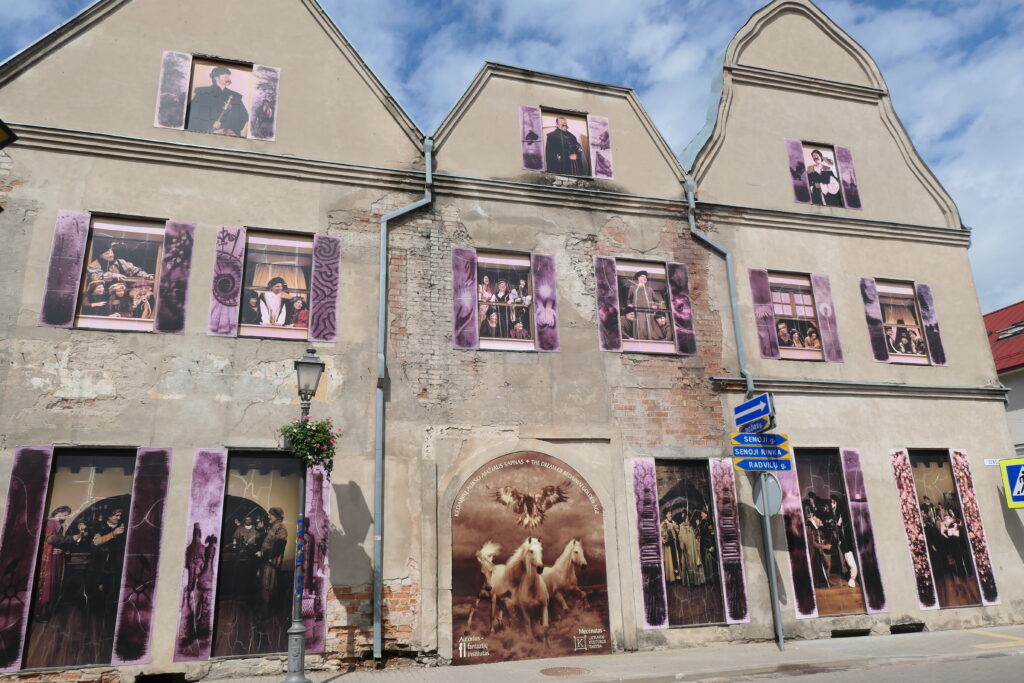
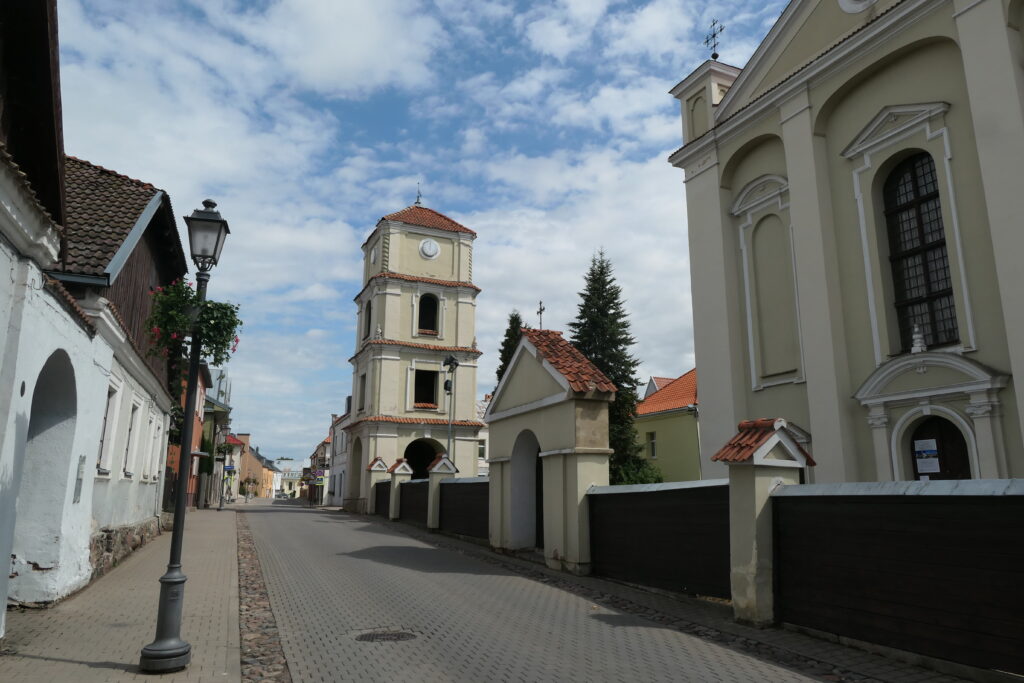









Klaipėda
Klaipėda is Lithuania’s third-largest city, located on the Baltic Sea coast, close to the Russian exclave of Kaliningrad. It was bustling with life when we were there – despite the look in these photos 🙂
Originally founded in the 13th century, Klaipėda was known as Memel, a name that reflects its Germanic influence. It was part of the Prussian Duchy and later came under the control of the Teutonic Knights. By the 16th century, it was an important port in the Baltic region. During the 17th and 18th centuries, Klaipėda thrived, and it remained a part of Germany for much of the 19th and early 20th centuries. The city was still named Memel during this period.
After World War I, the region around Klaipėda was contested, and in 1923, Lithuania took control of the area, despite the city being under the control of a German-speaking population. In 1939, as part of an agreement between Nazi Germany and the Soviet Union, the city and its surroundings were handed over to Germany, which led to significant changes in its demographic composition. The city was later occupied by Soviet forces after World War II, and Klaipėda was incorporated into the Lithuanian Soviet Socialist Republic as part of the USSR. Following the collapse of the Soviet Union and Lithuania’s re-establishment of independence in 1990, Klaipėda became a major center of economic growth.
The old German-style architecture and unique landmarks, such as the Klaipėda Castle, and its proximity to the Curonian Spit, a UNESCO World Heritage site, make the city a popular tourist destination.

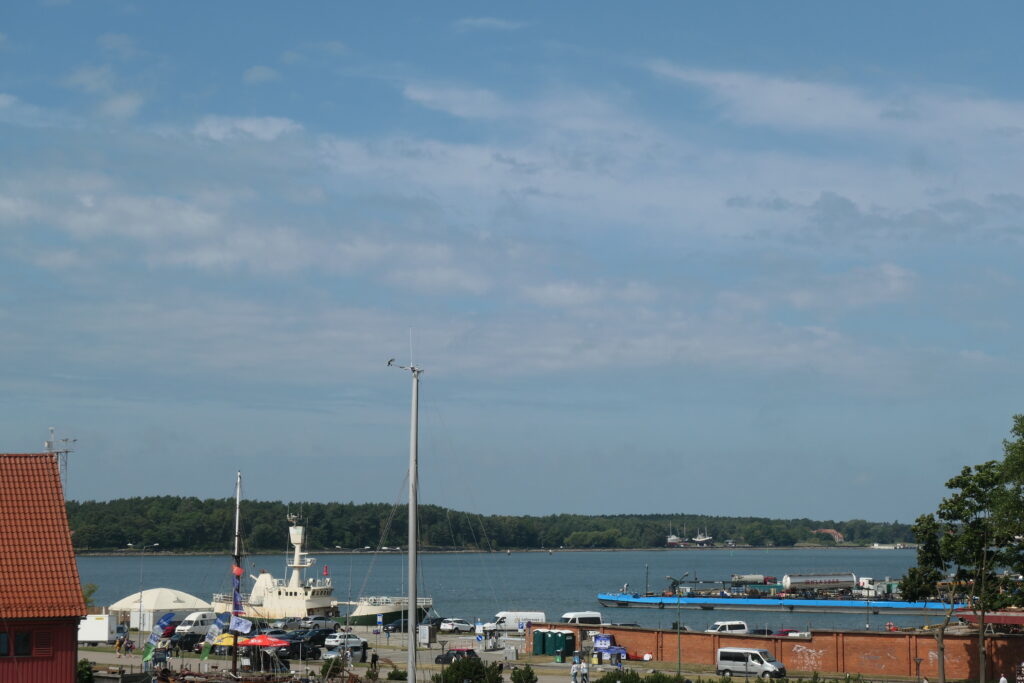





Lenkimai

Lenkimai is a small village in western Lithuania, known for its Wooden Sculpture Park. The village has become famous for its wooden sculptures, ranging from historical figures to symbolic representations of Lithuanian folklore.
This wooden monument is to Jonas Pabrėža, a Lithuanian noble and cultural figure, who was a key personality in Lithuania’s 18th-century history. Pabrėža was known for his efforts to preserve Lithuanian traditions and language during a time when the region was heavily influenced by foreign powers.
Pakapiai
Pakapiai is a small village in western Lithuania, located in the Šilalė District. Known for its tranquil rural atmosphere, the village is surrounded by beautiful landscapes, including forests and fields. Pakapiai is steeped in local traditions and Lithuanian culture, with a rich history dating back centuries.


Palanga
Palanga is on the short western coast of Lithuania. It’s the busiest coastal resort in the country and the beach is 11 miles (18 km) long. Although it was overcast and a bit chilly on the day we were there, it was clear to us that it’s a great coastal town. There are lots of restaurants and cafés, and the sand was lovely and soft.
It was still really busy when we were there, as the weather had been warm before we visited. There’s also a lot of wealth there, with plenty of supercars patrolling about – including a Ferrari that parked alongside us – obviously in order to be cool 😉





Skuodas
Skuodas is a small town in western Lithuania, located in the Šiauliai County near the Latvian border. It has a rich history and is a quiet and picturesque town with a strong sense of community. First mentioned in historical records in the 16th century, Skuodas grew in importance over the years due to its strategic location along trade routes.
The town is known for its historical architecture, including churches, traditional wooden houses, and public buildings from the 19th and early 20th centuries. Skuodas is also famous for its nearby natural attractions, such as the scenic Žemaitija National Park, which provides opportunities for hiking, fishing, and nature exploration.


Vilnius
Vilnius is a beautiful capital city located in the south east of the country that’s really accessible. The larger metropolitan area is home to around 850,000 people (2024). It’s an easy place to explore on foot, and there’s a lot to see, and parking only costs €2.50 per hour in the centre when we were there!
Situated on the banks of the Neris River, it is known for its rich history that spans centuries. The city’s Old Town, a UNESCO World Heritage site, is one of the largest and best preserved in Europe, with a stunning mix of Gothic, Renaissance, Baroque, and Neoclassical architecture. Key landmarks include the Vilnius Cathedral, Gediminas Castle, and the Gate of Dawn.
Vilnius was historically a major city of the Grand Duchy of Lithuania and later a part of the Polish-Lithuanian Commonwealth. The city became a cultural hub, particularly during the 16th and 17th centuries, as intellectual life flourished with universities, libraries, and churches. Over the years, Vilnius has seen numerous foreign influences, from the Russians to the Poles, leaving an indelible mark on its cultural landscape.
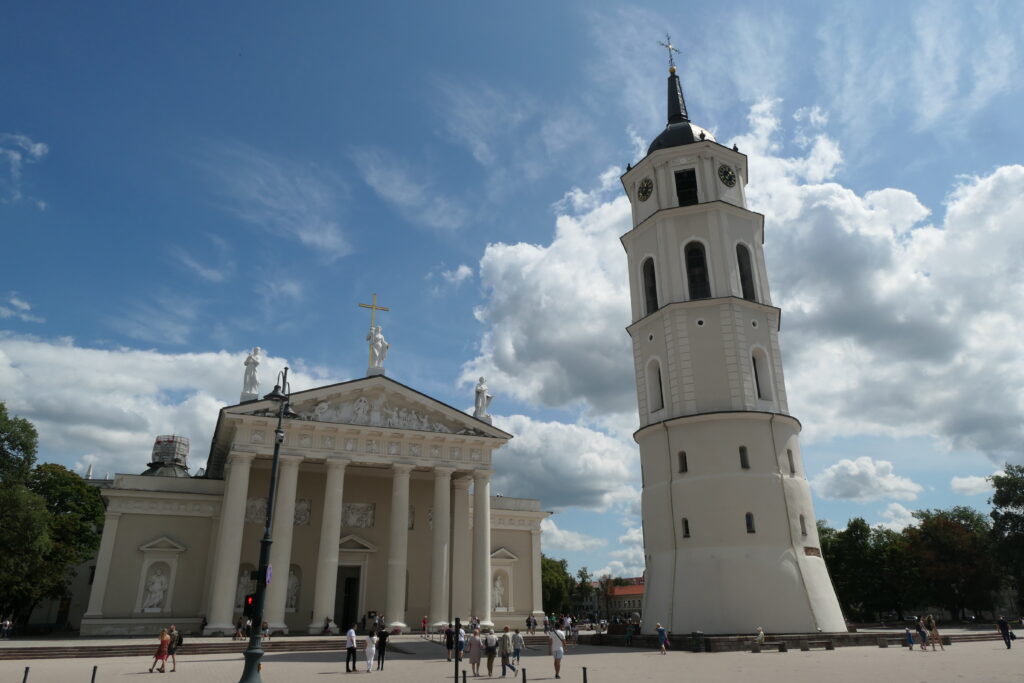
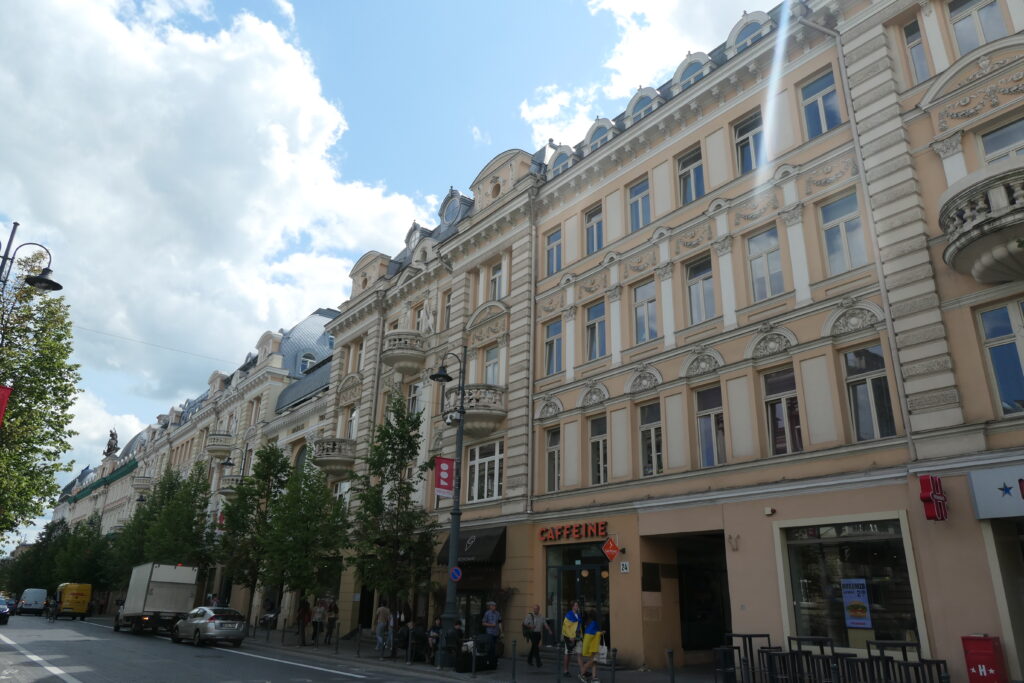
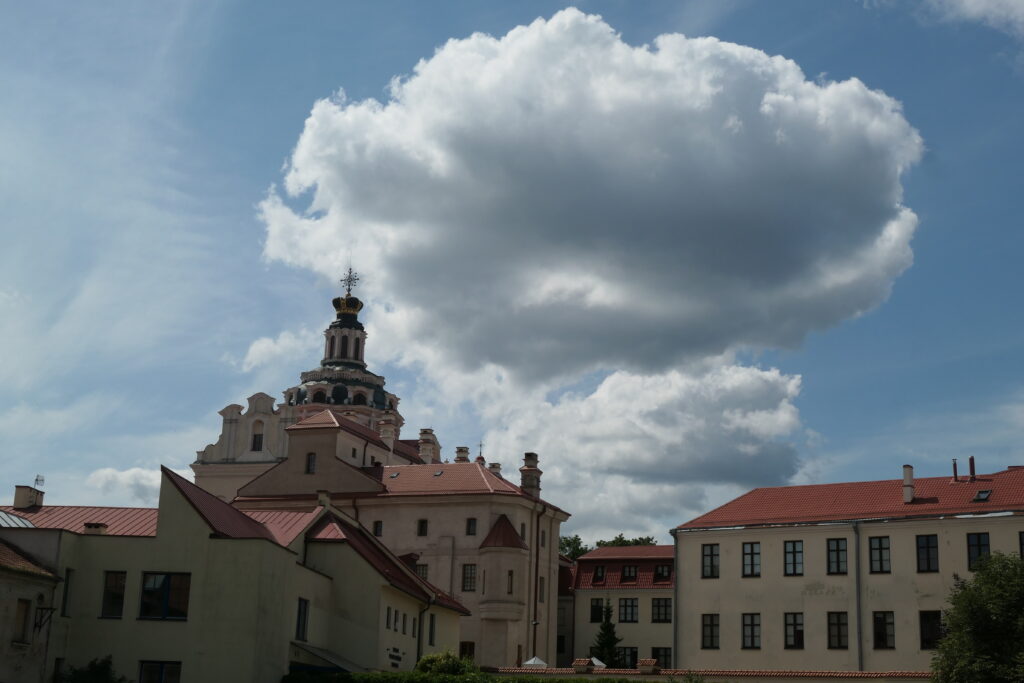























Žibininkai
Žibininkai is a small village in Lithuania, located about 4 km northeast of the coastal town of Palanga. It has a population of around 44 people. The village is known for its leisure and wellness attractions, including the ‘HBH Juozo alus’ brewery complex, which features beer gardens, restaurants, and a horse riding center. Another decent place we visited is the ‘Atostogų parkas’ resort, the largest recreation and wellness complex in Western Lithuania, offering swimming pools, saunas, and health treatments.


What’s it like to drive in Lithuania?
As with almost everywhere on the continent of Europe, they drive on the right hand side of the road in Lithuania.
Driving in Lithuania is remarkably similar to driving in the UK, as they have many of the same stupid habits – such as everyone driving in the outside lane, when there’s masses of space in the inner lanes. Although they’re not as crazy drivers as the Latvians, there are some with the same crazy habit of driving up behind you way too fast and hovering a foot (30 cm) behind you, in some vain attempt at intimidation presumably? In the main though, they drive in a far more relaxed way that the Latvians, which is great, but not as relaxed as the Estonians – which they should aspire to do! 😉
Bizarre roundabouts and road junctions
There are some very strange roundabouts where you have to choose the correct lane way in advance of approach, else you won’t be able to exit where you want to. And quite often the right hand lane will suddenly stop and turn off with no advanced warning. Many times we’ve seen Lithuanians themselves throwing their arms up in shock, and waving about frantically trying to get back into a left hand lane to go straight ahead.
They also have an utterly bizarre type of road where three lanes from opposite directions all merge into two lanes at the right angle – all at once!! So if if we were in 3 lanes turning into 2 lanes going left; at the same time people in three lanes opposite us were turning into the same 2 lanes (on their right)!! God knows who thought that was a good idea!! Chaos! Aside from some occasional barking of horns though, it’s mainly an easy affair.
Do you require an international driving permit in Lithuania?
We’ve created a dedicated page to driving abroad, which answers this question, and more, which you might find helpful.
Can you use your UK driving license when driving through Lithuania?
We’ve created a dedicated page to driving abroad, which answers this question, and more, which you might find helpful.
Do I need a carnet de passages to drive in Lithuania?
We’ve created a dedicated page to driving abroad, which answers this question, and more, which you might find helpful.
What are the speed limits in Lithuania?
The speed limits for cars in Lithuania are:
- 30 mph (50 km/h) for urban driving
- 45 mph (70 km/h) outside of built up areas
- 70 mph (110 km/h) on dual carriageways
- 80 mph (130 km/h) on motorways
What currency do they use in Lithuania?
In Lithuania they use the Euro. The use of credit / debit cards is now widespread. Travellers cheques are accepted. There are lots of ATMs.
You should make yourself aware of the amount that your bank charges you for using credit and debit cards abroad. Often credit cards are cheaper for purchasing items directly, and for withdrawing cash from ATMs.
What language do they speak in Lithuania?
They speak Lithuanian in Lithuania. English is now widely spoken by the younger generations.
What time zone is Lithuania in?
Remember, when you’re planning your next trip to take a look at what time zone it’s in.
Do I need a visa to visit Lithuania?
We’ve created a dedicated, more comprehensive page on visas, which you should find helpful. Check it out!
Is wild camping legal in Lithuania?
Yes, wild camping is fine, although you should avoid national parks and natural reserves.
What plug / socket type do they use in Lithuania?

In Lithuania they use plug / socket type F.
Health issues in Lithuania
Is it safe to drink water in Lithuania?
Yes, it is safe to drink tap water in Lithuania. Bottled water is also readily available across the country.
What vaccinations are required for Lithuania?
This NHS website is kept up to date with all relevant information on vaccinations in Lithuania.
Phones in Lithuania
What is the country calling code for Lithuania?
The country calling code for Lithuania is +370
What are the emergency phone numbers in Lithuania?
- The emergency number for police in Lithuania is: 112
- In Lithuania, the emergency number for ambulance is: 112
- The emergency number for fire in Lithuania is: 112
If you’ve got some useful info that you’d like to share, let us know!
Don’t forget to check out all the other pictures!
